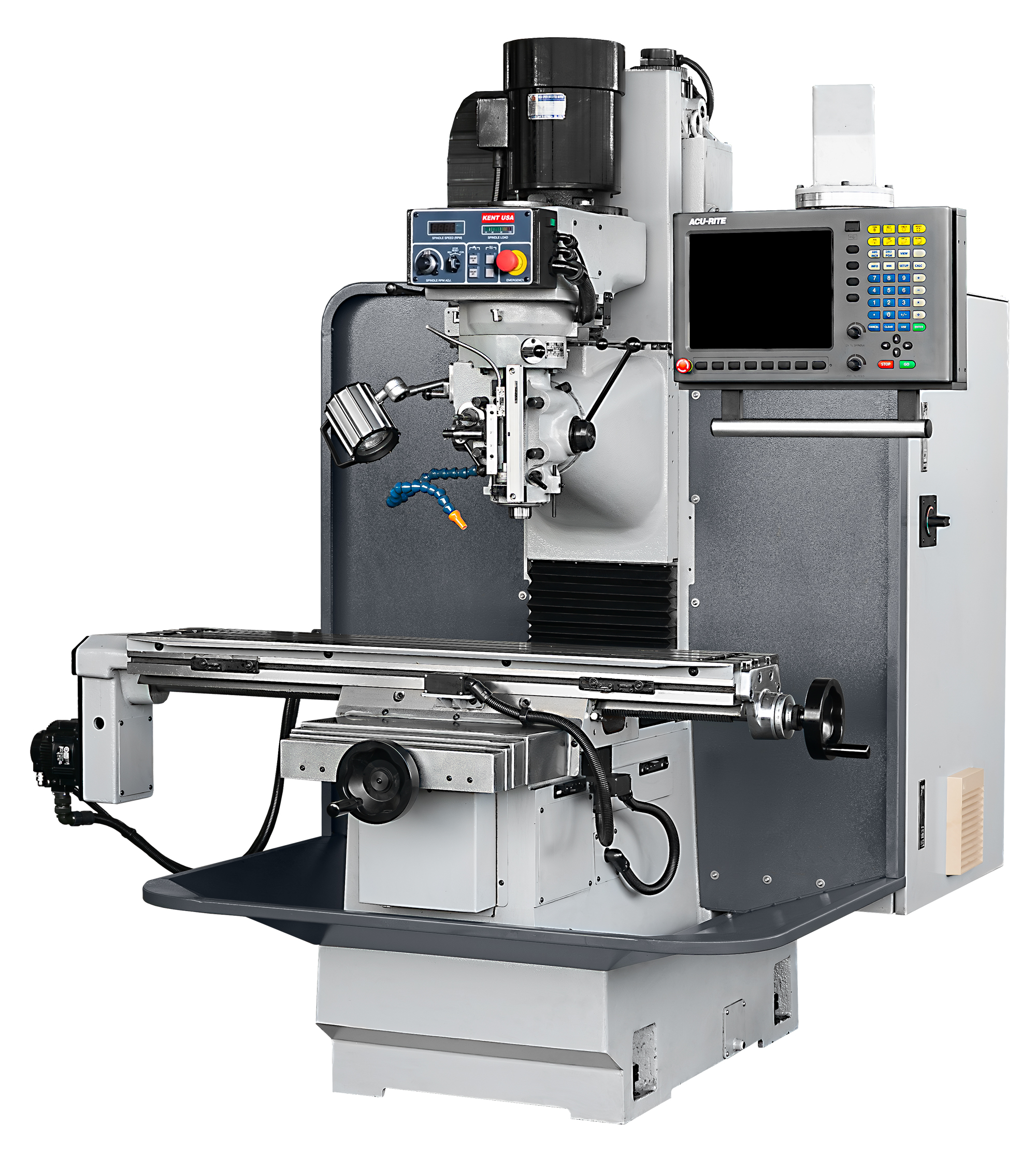Looking for a manual milling machine? Brace yourself, because the knee mill vs. bed mill discussion can get heated. With its Z-axis ram, the latter can carry heavier table loads and take bigger cuts than a knee mill. On the other hand, knee mills are far more common. For example, vocational schools typically train students on them, increasing a shop’s chance of finding someone who can go to work on day one. Check out our summary article about the training facilities utilizing our mills.
Knee Mill vs. Bed Mill Basics
Knee mill fans point to their greater versatility. Compare the BM-3 CNC bed mill from KENT USA® to its knee mill counterpart, the KTM-3VKF CNC. Both have a 10″ x 50″ table. Each has about the same amount of X and Y axis travel. Both have an R-8 taper and 4500 RPM spindle, although a 30-taper is available for the BM-3. And like most “half-CNC” machine tools, they come equipped with a conversational control, in this case an ACU-RITE MILLPWR G2.

So why do some consider the knee mill more versatile? In the KTM’s case, it’s the 14.5″ of ram travel. This opens the door to larger parts that might not fit on bed mill. Conversely, the BM-3 makes up for this with an extra 9″ of Z-axis travel. Bed mill fans will say, “Tip the part on its side. Problem solved.”
It’s All About the Weight
Perhaps the biggest knee mill vs. bed mill consideration is its load capacity. At 850 lbs., the KTM-3VKF is no slouch. Now compare that to the BM-3. With a maximum work load of 1480 lbs., it easily deserves “I can lift more than you” bragging rights. It also weighs roughly half again as much as the KTM-3, making it a bit sturdier and able to take heavier cuts. That said, a CNC control with its canned roughing routines and use of standard G-code makes it easy to remove even large amounts of material. Again, the biggest difference is the table capacity.

Coin Toss?
We’d like to say it’s a coin toss, but the knee mill vs. bed mill battle often comes down to one thing. Preference. Some operators cut their teeth (and lots of parts) on one style of machine. They’re familiar with the handle and knob locations and know the best way to set up a difficult workpiece, so will be more efficient, at least initially. It’s tough to argue with that. The good news is, both are excellent machines. And by equipping each with a highly advanced (and very cool) conversational control, both styles of machine are easy to use and highly productive. Come on over to KENT USA® and kick the tires. Crank the handles, push the buttons, and decide for yourself. Either way, you won’t go wrong.
Share this article:


